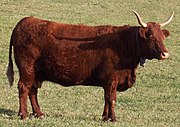反式脂肪,又稱為反式脂肪酸或逆態脂肪酸。英語為“ trans fatty acid ”或“ trans fats ”。是一種不飽和脂肪酸(單元不飽和或多元不飽和)。反式脂肪的名字來源於他的化學結構,其分子包含位於碳原子相對兩邊的反向共價鍵結構,和“順式脂肪”比較起來此反向分子結構較不易扭結。
不飽和脂肪酸的分子式因氫原子的方位不同,因而分為兩種結構:一種為順式鍵結,另種則為反式鍵結。天然的不飽和脂肪酸幾乎都是順式鍵結,所以動物所能代謝的大多為順式鏈結的脂肪。反式脂肪酸是經人工氫化處理後才誕生的,自然界中幾乎不存有,人也難以處理此類不飽和脂肪,一但進入人體中,不是人體所需要的營養素 [1] ,大都滯留於人體,進而增加患心髒血管疾病的機率 [ 見綜述 2] 。一般脂肪需要七天排出體外,可是,反式脂肪則需要長達 51 天才能分解、排出。
冠心病
現在被廣為應用的冠心病兩個血液指標: LDL/HDL 比率(越高越危險)和 C- 反應蛋白(越高越危險)。反式脂肪減少 HDL (有利健康的膽固醇)的水平,但增加 LDL 的水平,從而導致冠心病高發率 [4] 。反式脂肪比飽和脂肪更能引發冠心病,它可以比飽和脂肪提高 LDL/HDL 比率達兩倍 [5] 。對 700 名護士的研究發現反式脂肪食用最高組比最低組 C- 反應蛋白高出 76%[6] 。
關於 冠心病 死亡率的研究,發現 反式脂肪攝入會增加死亡率,不飽和脂肪攝入會減少死亡率 [7][8] 。研究發現美國每年 30,000 到 100,000 起心髒病死亡案例歸罪於食用反式脂肪 [3] 。
癌症
還沒有確定的結論,但最近的一個研究發現反式脂肪和前列腺癌有關。
糖尿病
人們越來越關心是否反式脂肪與二型糖尿病有關 [7] 。 84941 女性護士 16 年的跟蹤研究發現,反式脂肪攝入量最高組糖尿病增加 39%[10] 。
不育症
一個 2007 年的研究發現:“從反式脂肪中而不是從糖水化合物取得能量每提高 2% ,卵子不育可能性增加 73%[11] 。
來源
反式脂肪主要來自經過部份氫化的植物油。“氫化”是在 20 世紀初期發明的食品工業技術,並於 1911 年被食用油公司“ Crisco ”首次使用。部份氫化過程會改變脂肪的分子結構(讓油更耐高溫、不易變質,並且增加保存期限),但氫化過程也將一部份的脂肪改變為反式脂肪。
食物包裝上一般食物標簽 列出成份如稱為“氫化植物油”、“部分氫化植物油”、“氫化脂肪” 、“氫化菜油”、“固體菜油”、“酥油”、“人造酥油”、“雪白奶油”或“ shortening ”即含有反式脂肪。
天然反式脂肪會出現在反芻動物(如牛,羊)的奶中和體脂肪中。含量為總脂肪的 2-5 % [12] 。天然反式脂肪,其中包括共軛亞油酸和 vaccenic 酸,起源於這些動物的瘤胃。
Table 1. Typical Trans Fatty Acid Content of Foods Produced or Prepared | ||||
with Partially Hydrogenated Vegetable Oils in the United States . | ||||
Type of Food | Trans Fatty Acid Content | |||
g/Typical Serving | g/100 g | % of Total Fatty Acids | % of Energy Intake 2000-kcal diet | |
Fast or frozen foods | ||||
French fries† | 4.7–6.1 | 4.2–5.8 | 28–36 | 2.1–2.7 |
Breaded fish burger‡ | 5.6 | 3.4 | 28 | 2.5 |
Breaded chicken nuggets‡ | 5 | 4.9 | 25 | 2.3 |
French fries, frozen† | 2.8 | 2.5 | 30 | 1.3 |
Enchilada‡ | 2.1 | 1.1 | 12 | 0.9 |
Burrito‡ | 1.1 | 0.9 | 12 | 0.5 |
Pizza† | 1.1 | 0.5 | 9 | 0.5 |
Packaged snacks | ||||
Tortilla (corn) chips† | 1.6 | 5.8 | 22 | 0.7 |
Popcorn, microwave† | 1.2 | 3 | 11 | 0.5 |
Granola bar‡ | 1 | 3.7 | 18 | 0.5 |
Breakfast bar‡ | 0.6 | 1.3 | 15 | 0.3 |
Bakery products | ||||
Pie† | 3.9 | 3.1 | 28 | 1.8 |
Danish or sweet roll† | 3.3 | 4.7 | 25 | 1.5 |
Doughnuts† | 2.7 | 5.7 | 25 | 1.2 |
Cookies† | 1.8 | 5.9 | 26 | 0.8 |
Cake† | 1.7 | 2.7 | 16 | 0.8 |
Brownie† | 1 | 3.4 | 21 | 0.5 |
Muffin† | 0.7 | 1.3 | 14 | 0.3 |
Margarines | ||||
Vegetable shortening† | 2.7 | 19.2 | 19 | 1.2 |
Hard (stick)† | 0.9-2.5 | 6.2-16.8 | 15-23 | 0.4-1.1 |
Soft (tub)† | 0.3–1.4 | 1.9–10.2 | 5–14 | 0.1–0.6 |
Other | ||||
Pancakes† | 3.1 | 2 | 21 | 1.4 |
Crackers† | 2.1 | 7.1 | 34 | 0.9 |
Tortillas† | 0.5 | 1.8 | 25 | 0.2 |
Chocolate bar† | 0.2 | 0.6 | 2 | 0.1 |
Peanut butter† | 0.1 | 0.4 | 1 | 0.05 |
監控和管製
反式脂肪在少數國家中被嚴格管製,而較多國家要求食品製造商必須在產品上標注是否含有反式脂肪,而也有多起因反式脂肪而引起的法律訴訟正在進行(主要是針對速食店進行的訴訟)。許多食品公司已經主動的停止在產品中使用反式脂肪,或是增加不含反式脂肪的產品線。
世界衛生組織建議,人們平均每天攝入的反式脂肪應為總能量的 1% 或更低;換言之,每日攝取不超過 2 克的反式脂肪。目前,中國人平均日攝取百分比為 1% ,並未超過世衛建議的水平;美國則是 2.6% ,明顯超標。
有鑒於此, 2006 年美國立法要求所有每份含反式脂肪超過 0.5 克的食物都必須在標簽上注明;幾周前紐約更立法要求,從 2007 年開始,餐館使用的油類、人造黃油和植物乳化油等,每份反式脂肪含量不能超過 0.5 克。
雖然中國人的反式脂肪含量仍處在健康水平,無需效仿紐約的做法,但保健促進局已開始跟食品廠商、材料供應商和快餐店等商討推出較低或不含反式脂肪的材料和食品,並鼓勵商家把食品中的反式脂肪含量列在包裝上,提高公眾對反式脂肪的意識。
通過該局種種標準、不含反式脂肪或僅含有少過 0.05 克反式脂肪的食品都能夠擁有“更健康選擇”標簽。
文獻:
1. Food and nutrition board, institute of medicine of the national academies ( 2005 ). Dietary Reference Intakes for Energy, Carbohydrate, Fiber, Fat, Fatty Acids, Cholesterol, Protein, and Amino Acids (Macronutrients) . National Academies Press , 423.
2. Mozaffarian D, Katan MB, Ascherio A, Stampfer MJ, Willett WC (April 2006). "Trans Fatty Acids and Cardiovascular Disease". New England Journal of Medicine 354 (15): 1601–1613.
3. Mozaffarian D, Katan MB, Ascherio A, Stampfer MJ, Willett WC (2006). "Trans fatty acids and cardiovascular disease". N. Engl. J. Med. 354 (15): 1601–13.
4. Food and nutrition board, institute of medicine of the national academies (2005). Dietary Reference Intakes for Energy, Carbohydrate, Fiber, Fat, Fatty Acids, Cholesterol, Protein, and Amino Acids (Macronutrients). National Academies Press, 504.
5. A Ascherio (1999). "Trans fatty acids and coronary heart disease.". New England Journal of Medicine 340 (25): 1994–1998.
6. Lopez-Garcia, Esther (2005). "Consumption of Trans Fatty Acids Is Related to Plasma Biomarkers of Inflammation and Endothelial Dysfunction". The Journal of Nutrition 135 (3): 562–566.
7. Trans Fat Task Force (June 2006). "TRANSforming the Food Supply (Appendix 9iii)". Retrieved on 2007-01-09. (Consultation on the health implications of alternatives to trans fatty acids: Summary of Responses from Experts)
8. Oh, K; Hu, FB, Manson, JE, Stampfer, MJ, Willett, WC (2005). "Dietary fat intake and risk of coronary heart disease in women: 20 years of follow-up of the nurses' health study". American Journal of Epidemiology 161 (7): 672–679.
9. Jorge, Chavarro; Meir Stampfer, Hannia Campos, Tobias Kurth, Walter Willett & Jing Ma (2006). "A prospective study of blood trans fatty acid levels and risk of prostate cancer". Proc. Amer. Assoc. Cancer Res. 47. American Association for Cancer Research.
10. Hu, FB; van Dam, RM, Liu, S (2001). "Diet and risk of Type II diabetes: the role of types of fat and carbohydrate". Diabetologia 44 (7): 805–817.
11. Jorge E Chavarro, Janet W Rich-Edwards, Bernard A Rosner and Walter C Willett Dietary fatty acid intakes and the risk of ovulatory infertility American Journal of Clinical Nutrition, Vol. 85, No. 1, 231–237, January 2007
12. Trans Fat Task Force (June 2006). "TRANSforming the Food Supply









